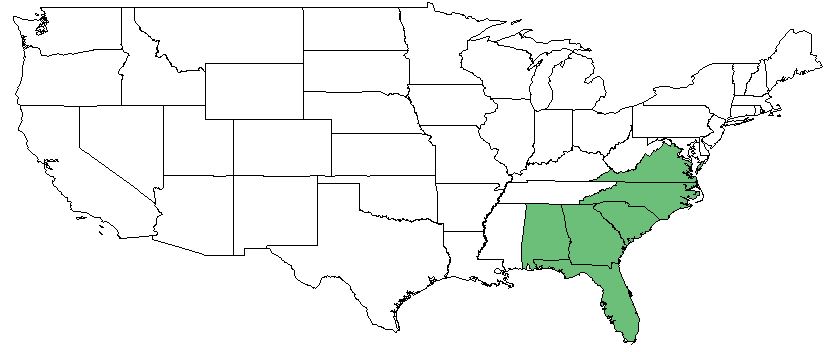Morella pumila
| Morella pumila | |
|---|---|

| |
| Photo by Gary Fleming at the Digital Atlas of the Virginia Flora | |
| Scientific classification | |
| Kingdom: | Plantae |
| Division: | Magnoliophyta - Flowering plants |
| Class: | Magnoliopsida - Dicots |
| Order: | Fagales |
| Family: | Myricaceae |
| Genus: | Morella |
| Species: | M. pumila |
| Binomial name | |
| Morella pumila L. | |

| |
| Natural range of Morella pumila from Weakley [1] | |
Contents
Taxonomic Notes
Synonyms: Myrica pusilla Rafinesque, Morella cerifera (Linnaeus) Small, Myrica cerifera Linnaeus var. pumila Michaux, and Cerothamnus pumilus (Michaux) Small.
Varieties: none
Description
M. pumila, also known as Dwarf Wax-Myrtle, is a native perennial that varies in growth habit from an evergreen shrub and subshrub to a tree growth. It is a member of the Myricaceae family, and can grow up to 6 feet high. The species is dioecious, with aromatic leaves and root nodules that help fix nitrogen in the soil. [2]
Distribution
Ecology
Habitat
Seed bank and germination
The species requires a period of cold, moist stratification before germinating, where an average germination time is a month to 90 days. However, wax myrtles can also be propagated from semi-hardwood and soft cuttings treated with a rooting hormone. [2]
Use by animals
M. pumila is used by wild birds as a source of food, and the branches are also utilized by wild birds for nesting and perching habitat. [2]
Conservation and Management
Cultivation and restoration
This Wax-Myrtle is popular for cultivation due to its ornamental value. M. pumila is also a good plant to use for native area restoration in its native communities like sandy coastal and woodland communities. It is a good plant for dune stabilization and further restoration. [2]